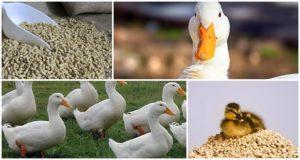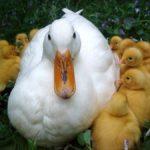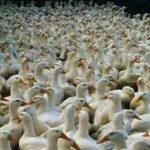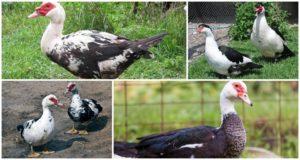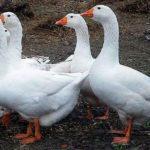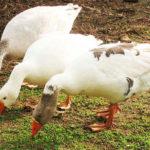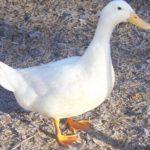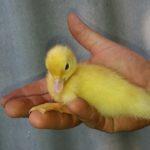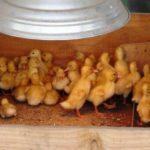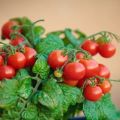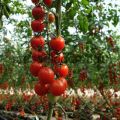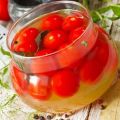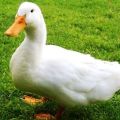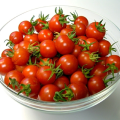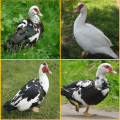Description and characteristics of Cherry Valley ducks, breeding and care
Many broiler ducks have impressive results in both meat and egg production. Cherry Valley is a well-known and sought-after breed of duck, which is grown industrially and bred for home use. Strong immunity, egg production, early maturity, excellent taste of meat are the undoubted advantages of cherry vellie ducks.
Origin story
Taking the Peking duck, popular with poultry farmers, as a basis, breeders in England have created a new broiler breed. Scientists coped with the task successfully - the broiler grows rapidly, reaches maturity, and has high egg yield. The breed received its name from the name of the company where the breeding work was carried out. Note that in our country, ducks of this breed are sometimes called "chilli-willy". The selection result is a two-line cross. The advantage of the paternal line of the breed is the greater weight of the carcass, the ducks on the maternal line produce more eggs.
In our country, representatives of the Cherry Valley breed were brought in the 70s of the 20th century for breeding on state farms. Ducks fell in love with poultry breeders for their unpretentiousness, rapid growth, and resistance to diseases. They began to be acquired for breeding in the household. Despite the constant emergence of new species, cherry vellies remain a favorite and demanded breed of ducks. They are bred in different countries, appreciated for their delicious meat and ease of maintenance. The breed of ducks is confidently in the ranking of the most popular for large poultry farms and small farmsteads.
Description of the breed of Cherry Valley ducks
In appearance, cherry velli does not differ much from Peking ducks. You can recognize her by her pure white plumage, large body with a developed chest. The main features of the breed:
- the body is impressive, directed vertically, the short wings fit tightly to the body, due to this, the figure of the duck is formed, definite;
- the chest is wide, the pectoral muscles are well developed, the impressive size of the sternum is visible through the plumage of the duck;
- the neck is thick, the forehead is wide;
- legs are shifted to the back of the body, strong, short, yellow-orange color, cherry-velli swim well;
- the head is not large, the beak is slightly curved, orange-yellow, the eyes of the duck are in shades of blue and blue.

Females and males of cherry vellis differ slightly.Males have a more massive head and a more powerful body, although the weight indicators differ by 0.5 kilograms. The heads of females are slimmer and smaller. Cherry Valley ducklings grow quickly, do not get sick, the breed has impressive survival rates.
Breed characteristics
The breed belongs to the egg-meat direction, is famous for its early maturity. The meat is red; in young ducks it contains a small amount of fat. In adult poultry, the meat becomes tougher, the fat content increases, but the taste remains at its best.
Breed standards:
- duck weight - 3.4-3.7 kilograms, maximum weight of males - 4 kilograms, females - 3.5 kilograms;
- when slaughtered at 7 weeks, the weight is 2.6-3.5 kilograms;
- females begin to lay at 7 months, egg weight - 70-90 grams;
- Cherry Valley have 2 crosses and a hybrid breed line with averaged egg and meat.
The maternal and paternal lines of ducks differ slightly in terms of productivity. Paternal has the following indicators:
- egg yield - 100-110 per year;
- duck weight at 7 weeks of age is 3.5 kilograms on average.

Representatives of the parent group:
- 120-150 eggs are laid per year;
- weigh up to 2.9 kilograms.
Mother crosses of ducks are purchased for breeding, selling eggs and ducklings. Representatives of the paternal line of the breed are bred for early slaughter for meat.
Note: duck meat is not considered dietary; it takes more time to digest it than for white species. Has a high content of nutrients.
Pros and cons
The advantages of the broiler breed are undeniable, they are noted by all owners of cherry vellies and large commercial producers.
Ducks have a good-natured character, are pleasant to look at, cute and friendly. Note that due to the rapid growth of ducks, it is necessary to make a balanced diet, otherwise, by the time of slaughter, the livestock will not gain the declared parameters of the breed.
Basic requirements for maintenance and care
Cherry Valley broilers do not differ in their capricious disposition; any beginner can cope with caring for a bird. What conditions are required to maintain the health and productivity of ducks:
- The temperature in the house is maintained at 16-18 °. These are the best conditions for maintaining egg production. If the temperature is kept lower, egg production will be reduced. When growing cherry vellis in cold regions, the room is insulated, stoves or air heaters are installed, preventing the temperature from dropping below 5 °.
- Density of placement. Closeness increases the risk of spreading infections, parasites. Recommended rates are 3 birds per square meter of area.
- Ventilation system. It is important to free the house from excess carbon dioxide and remove excess moisture. Recommended humidity is 60%.
- Illumination. With constant maintenance indoors, lamps are placed in the poultry house, providing illumination for 12-14 hours a day.
- House cleaning. Litter is removed from the room, the litter is partially replaced once a week. Complete disinfection of the poultry house and equipment is required every 6 months.
- The nests are placed along the far wall. They are made from boxes, laid with grass, moss, sawdust, peat. The number of nests is 2 times less than the number of layers.
- Poultry house arrangement.At a height of 15-25 centimeters from the floor, beams are stuffed, which act as a roost for cherry vellies. The width of the timber is 40 centimeters, the length is from half a meter.
- Feeders. Long wooden troughs are made for feeding. Ducks scatter food, so they only fill them up to a third of the height.
- Walking area. The plot is fenced off with a mesh fence, grass is planted, a canopy is made from the sun, rain, bird of prey. The walking area is provided with feeders, drinkers.
- Water. If ducks do not have access to a natural pond or river, pools and containers with water are placed in the walking area. The depth is sufficient for swimming. With the onset of cold weather, water procedures are canceled, the reservoir is removed so that the ducks do not catch cold.
- To remove ectoparasites from the plumage, containers with a mixture of ash and sand are placed so that the ducks can cleanse themselves of pests. Change the mixture - every 3-4 weeks.

The ducks in the house are protected from drafts. Provide ventilation in winter, as cherry vellies love fresh air.
Drawing up a diet
Cherry-vellies grow quickly, and a balanced diet is needed to gain weight. The fast metabolism of the ducks ensures the digestion of different types of feed. The simplest type of feeding is when keeping on a water-run, which is often practiced in the household. Cherry-wells are happy to eat grass, algae, small aquatic life, insects and receive a full set of vitamins, micro- and macroelements. But this method of content is not available to everyone. Most poultry farmers are forced to compose the diet themselves, to select a menu for the ducks. There are 2 feeding methods:
- Dry - consists of mixed feed, grain, granular mixtures. This ration is practiced by large farms, where feeding is automated, the mixture is poured at the rate into a mechanical feeder.
- Combined - using a variety of feeds. Usually used in households.
In small backyards, it is advisable to use a mixed type of feeding. Feed composition and basic rules:
- You need to feed the ducks 2-3 times a day.
- Succulent food consists of herbs - dandelion, nettle, meadow species. They give a cabbage leaf, chopped carrots, pumpkin, zucchini. Boiled potatoes are added to strengthen the muscular system. The grass is crushed, dried, steamed.
- Grain mixtures - crushed wheat, oats, barley, millet. In the summer, legumes are introduced into the diet.
- Boiled porridge, leftovers from the table.
- They give cake to increase the calorie content of feed.
- Protein components - different types of bone meal, meat and fish waste.
In the morning, cherry vellies receive roughage (hay), grass, mixed vegetables. When walking, juicy components can be skipped. Roughage is necessary for ducks to start digestion, stimulate intestinal peristalsis. For evening feeding, a cereal mixture is given. In cold weather, the diet is supplemented with protein feed so that the ducks do not freeze.
Note: the tenderness and aroma of duck meat largely depend on the composition of the feed.
Use of compound feed
Growing cherry-velli only on compound feed significantly reduces labor costs for making menus and preparing food for ducks. Combined feed contains a full range of substances in proportions necessary for poultry health.
This method is used by all large poultry farms, rationing and feeding in a mechanized way. For private owners, small farms, the main difficulty is to choose a high-quality inexpensive composition so that profitability does not suffer, and the ducks get everything they need.

Breeding subtleties
Breeding ducklings at home does not cause difficulties even for inexperienced poultry farmers. Cherry-well ducks have a developed maternal instinct, willingly sit on the clutch and breed ducklings. Ducks mature at 7 months. Along with incubation, incubation is used in small farms.
When crossing, it is important to select ducks of appropriate lines that will not spoil the breed, will not lead to degeneration and loss of properties. A duck can hatch up to 20 eggs at a time. For the first two days she does not get up, settles on the masonry. Water and food are placed nearby so that the duck can eat without losing sight of the eggs.
In terms of survival, Cherry Valley ducklings do not lag behind young Indo-ducks (92-96%). In the first days after birth, it is important to provide heating of the house (28-30 °), lighting for a long time.
They begin to feed the ducklings with finely chopped eggs, then porridge and cottage cheese are gradually introduced, diluting with fermented milk products. Feeding - 5-6 times a day. Weekly ducklings are given greens, which are finely chopped and steamed with boiling water. 7 week old ducks are ready for slaughter. Their meat is characterized by tenderness, low fat content, pleasant aroma without the characteristic pronounced smell of an adult duck.
Possible diseases
One of the essential advantages of cherry velli ducks is their developed immunity. They rarely get sick, if you follow the conditions of detention, provide a complete diet. Possible diseases of ducks:
- ectoparasite infestation - ducks are treated with insecticides, the poultry house is disinfected;
- colds - insulate rooms, protect from dampness;
- intestinal - normalize the diet of ducks, are treated with antibiotics;
- hypovitaminosis - diet, use of vitamin supplements, premixes.
Due to the rapid growth of ducks, it is important to make a diet rich in vitamins, to ensure exposure to the air, the sun, walking and swimming in the pond.
Cherry Valley ducks are an excellent choice for large farms and private owners. The excellent quality of meat, unpretentiousness and rapid weight gain were appreciated by poultry farmers all over the world and ordinary consumers of duck products.
